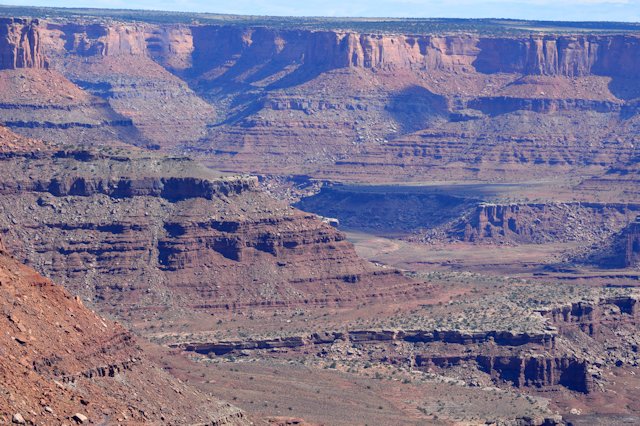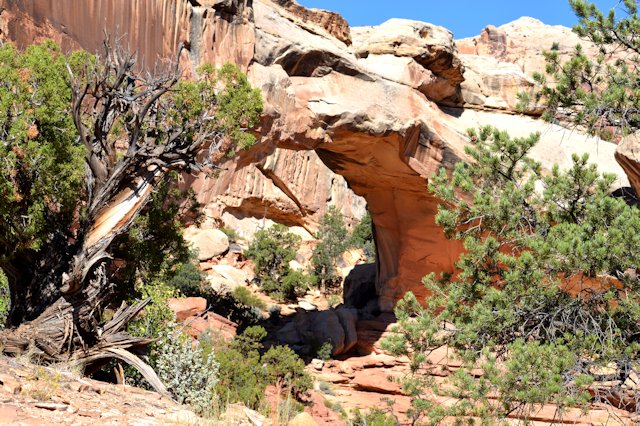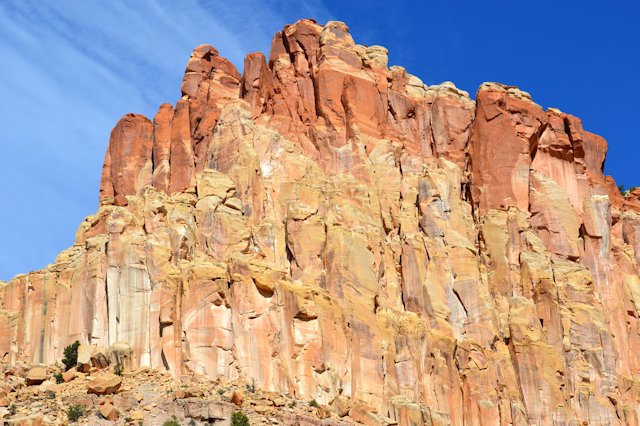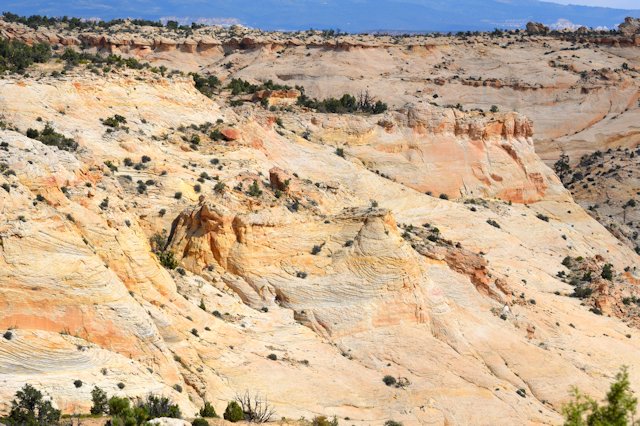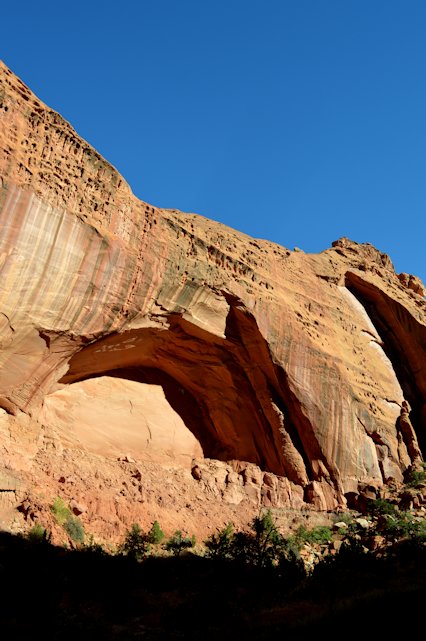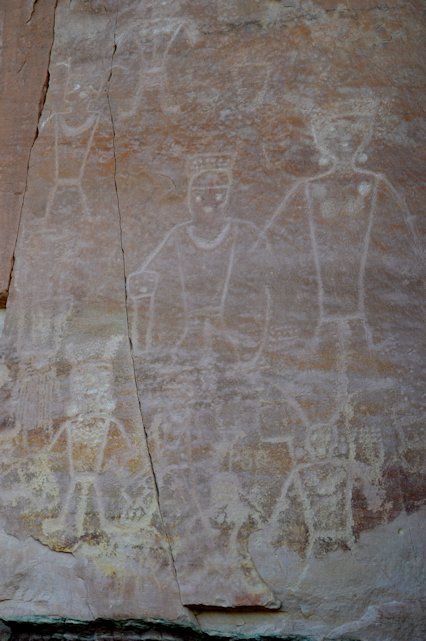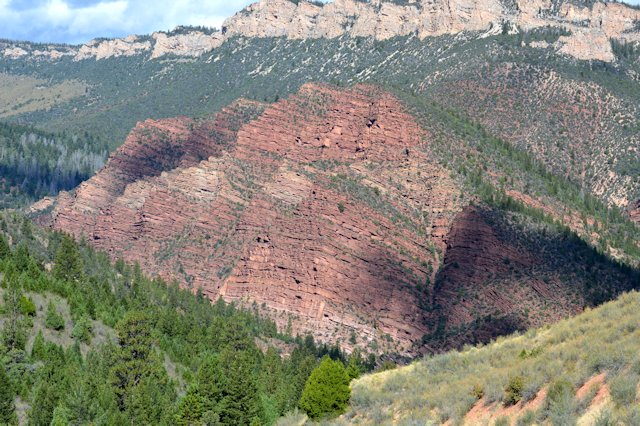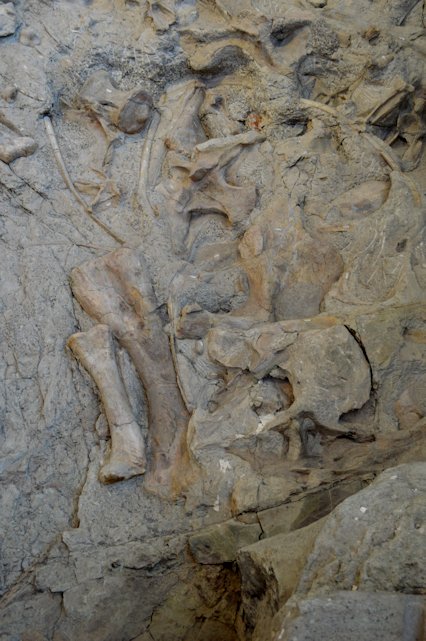We visited the Canyonlands National Park which is near Moab. I didn’t really know a lot about this national park before we came. It’s a large area consisting of vast canyons with the Green River and the Colorado River at the bottom with a large high mesa between the two rivers. This large mesa is called “Island in the Sky” and it really did seem like it…it’s so much higher than the surrounding canyon landscapes that you are looking down on birds soaring through the sky.
The Green and Colorado Rivers are both large rivers, and they join together near the south end of the park. Most of the canyon areas as accessible only by 4×4 vehicles and long strenuous hikes, so we stayed up on the mesas to get views of the canyons.
Those views were fantastic! I think they rival the Grand Canyon in beauty and diversity. Looking west from the Island in the Sky you can see down to a lower mesa and to the numerous canyons carved through it. The Green River meanders through the area with lots of hairpin turns and the number of carved canyons is just amazing!
Looking east from the Island in the Sky you can similar canyons and hairpin turns of the Colorado River. One thing that impressed me is how green both of the rivers are. There are lots of rock formations down in the Colorado River hairpin turns and lots of colored bands in the rock canyons. Just beautiful!
Here are pictures we took of the canyon and river views:

